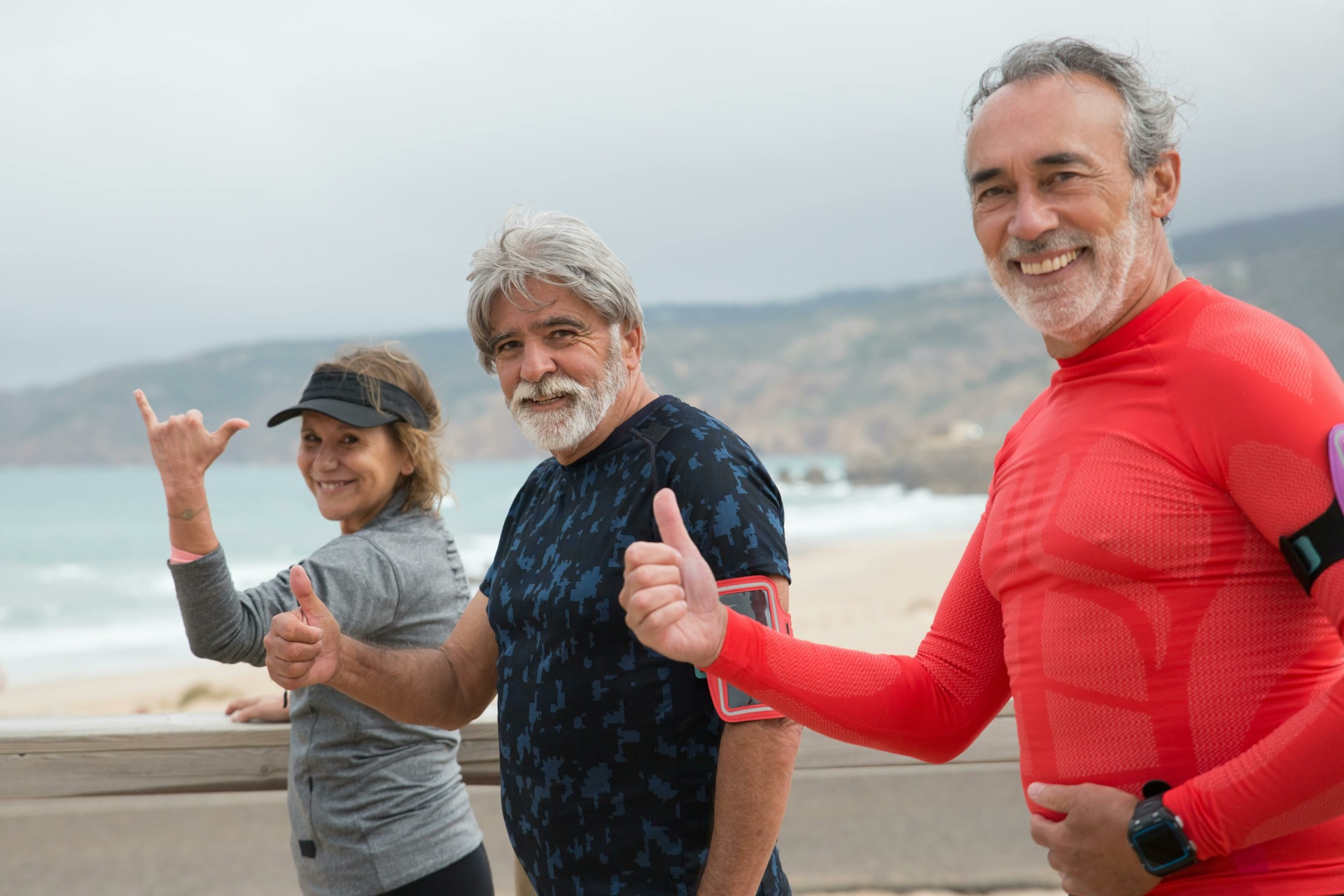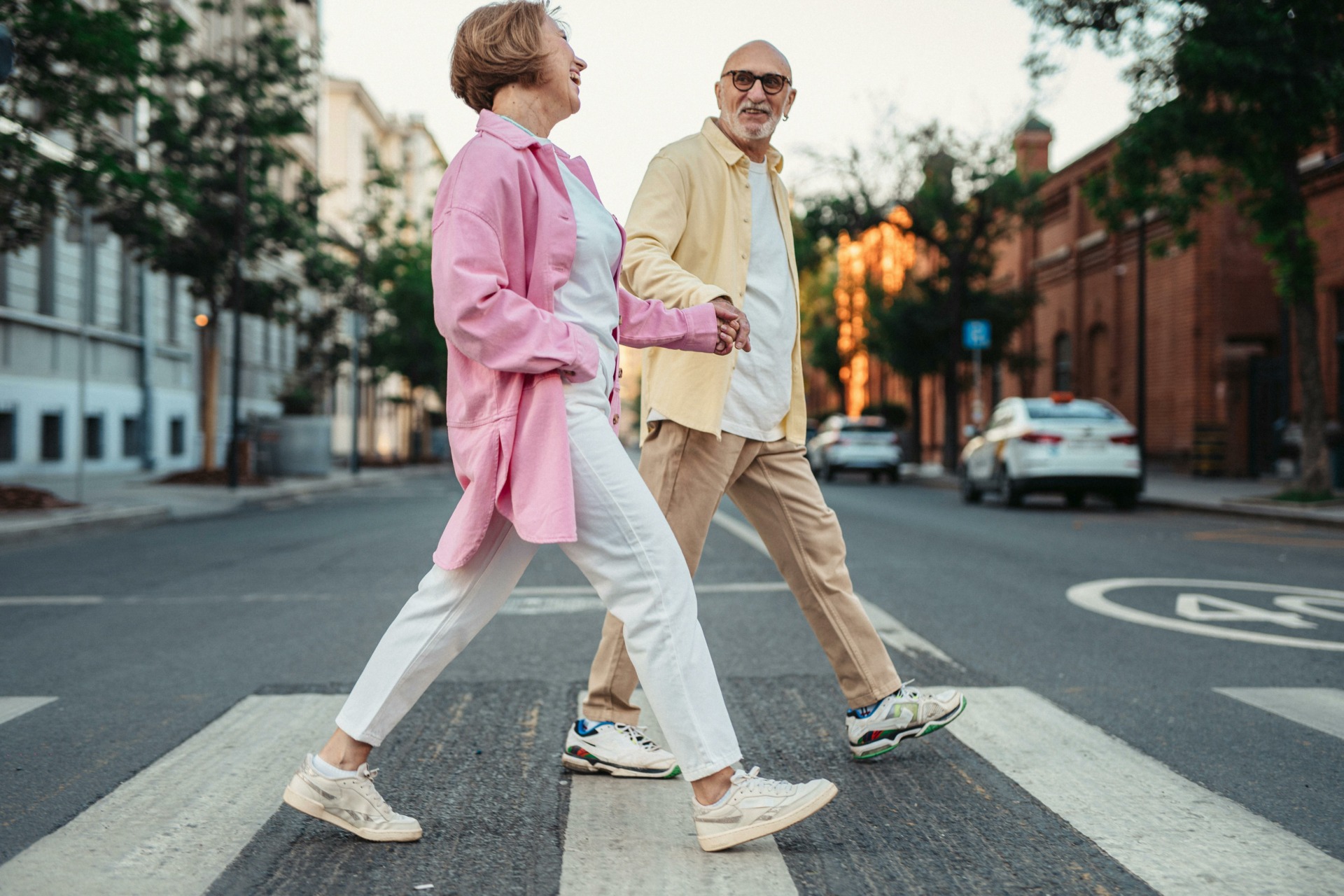As we age, staying active becomes more important than ever. While high-intensity workouts and gym sessions may not be for everyone, walking is a simple, accessible, and highly effective way to maintain health and well-being. Whether it’s a short stroll around the neighborhood or a brisk walk in the park, incorporating regular walking into your routine can bring tremendous benefits—both physically and mentally.
- Supports Heart Health
One of the biggest advantages of walking is its impact on heart health. Studies show that walking regularly can lower blood pressure, improve circulation, and reduce the risk of heart disease and stroke. Just 30 minutes of walking a day can help strengthen your heart and keep it working efficiently as you age. - Helps with Weight Management
Maintaining a healthy weight becomes more challenging as metabolism slows with age. Walking is a great way to burn calories and manage weight without putting excessive strain on the body. It also helps regulate blood sugar levels, reducing the risk of type 2 diabetes. - Strengthens Muscles and Joints
As we get older, we naturally lose muscle mass and bone density, which can lead to weakness and mobility issues. Walking helps strengthen muscles, improve joint flexibility, and keep bones strong, reducing the risk of osteoporosis and arthritis-related pain. It also improves balance and coordination, which is essential in preventing falls. - Boosts Mental Health and Mood
Walking isn’t just good for the body—it’s great for the mind too. Regular walks help reduce stress, anxiety, and symptoms of depression. Being outdoors, breathing fresh air, and getting natural sunlight all contribute to improved mood and mental clarity. Plus, walking releases endorphins, the body’s natural feel-good chemicals, which promote a sense of happiness and well-being. - Improves Sleep Quality
Many older adults struggle with sleep issues, including insomnia and restless nights. Walking can help regulate sleep patterns by promoting relaxation and reducing stress. A daily walk, especially in the morning or early evening, can lead to deeper, more restful sleep. - Enhances Social Connection
Loneliness and social isolation are common concerns in older age. Walking provides a great opportunity to connect with others, whether it’s through joining a walking group, strolling with a friend, or simply greeting neighbors along the way. These social interactions can improve mental health and give a sense of community and purpose. - Supports Brain Function and Reduces Dementia Risk
Walking has been shown to improve cognitive function and may reduce the risk of dementia. It increases blood flow to the brain, helping to preserve memory and mental sharpness. Studies suggest that staying physically active can delay cognitive decline and support long-term brain health.
How to Get Started
Starting a walking routine doesn’t have to be complicated. Here are a few simple tips:
Start Slow: If you’re new to walking, begin with short, manageable distances and gradually increase your time and pace.
Wear Comfortable Shoes: Proper footwear is essential to prevent discomfort and injuries. Choose supportive walking shoes.
Stay Hydrated: Drink water before and after your walk to stay hydrated.
Make it Enjoyable: Listen to music, a podcast, or take a scenic route to make walking more enjoyable. But remember to be aware of your surroundings and situation: not everywhere is safe.
Walk with a Friend: Having a walking buddy can help keep you motivated and accountable.
Final Thoughts
Walking is one of the best things you can do for your health as you age. It’s free, low-impact, and easy to fit into your daily routine. Whether your goal is to improve heart health, maintain mobility, boost your mood, or simply enjoy some fresh air, walking can help you stay active and independent for years to come.
So lace up your shoes, step outside, and start walking—your body and mind will thank you!
Photo by SHVETS production: https://www.pexels.com/photo/happy-elderly-couple-holding-hands-while-crossing-on-the-pedestrian-lane-8972263/



Leave a Reply